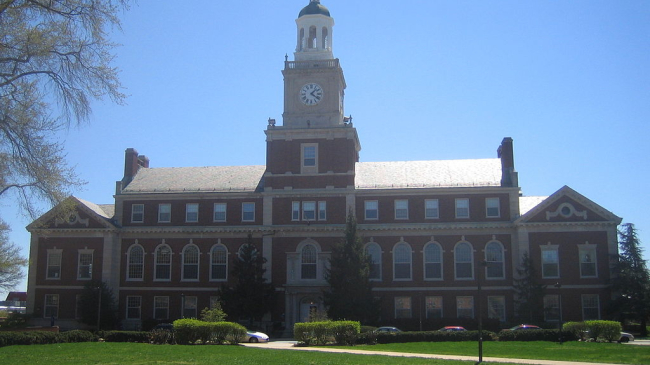August 21 through 23 were three of the hottest days of summer 2018 in the mid-Atlantic. Heat shimmered above the pavement, children sought refuge in public spray parks, and commuters hurried between air-conditioned trains and offices. At the same time, a corps of citizen scientists took to the streets of Washington, D.C., and Baltimore, Maryland, with temperature sensors mounted on their cars and bicycles. Taking measurements every second, they set out to map their cities’ hottest places.

Youth from Groundwork RVA join with Jeremy Hoffman to look for hot spots in Richmond, Virginia, using a forward-looking infrared thermal camera. (Image credit: Courtesy of Jeremy Hoffman)
The goal was to produce highly detailed maps of “urban heat islands,” areas within cities that can run 10 to 20 degrees hotter than other areas. Unshaded roads and buildings absorb more heat during the day and radiate that heat back into the surrounding air, significantly increasing the local air temperature relative to greener or shaded areas. On days when local temperatures climb above 95 degrees Fahrenheit, the additional heat emitted by paved and concrete structures can produce dangerously hot conditions in certain neighborhoods.

Building on work funded in part by NOAA’s Environmental Literacy Program, the Climate Program Office partnered with the Science Museum of Virginia offsite link in Richmond and Portland State University offsite link in Oregon to identify these cities’ heat islands. Volunteers drove three one-hour sessions throughout the day, recording air temperature on prescribed routes. Together, they collected over 75,000 temperature measurements from across each city.
Scientists at Portland State University processed the data and released detailed temperature maps of Washington and Baltimore. “The citizen scientists did a remarkable job at collecting data across both cities,” said Vivek Shandas, professor of urban studies and planning at Portland State University. “They provide one of the highest-resolution descriptions of ambient temperatures for Baltimore and Washington.” The team observed temperature differences of around 16.5 degrees in Washington and 17 degrees in Baltimore between the cities’ hottest and coolest places at the same time of day. While some areas were 85 degrees, other neighborhoods soared to 103 degrees.

These maps don’t just show temperature; they can also be roadmaps for change. The information allows city planners, nonprofits, and community organizations to prioritize heat islands as areas for public health intervention, green infrastructure projects, and environmental monitoring. Government officials from both Washington and Baltimore expressed interest in using these maps in their long-term climate resilience planning. Project participants were eager to take the next step by reaching out to vulnerable neighborhoods to help residents develop tailored adaptation plans.
NOAA and its partners plan to develop an off-the-shelf, ready-made template to help other cities to affordably conduct their own urban heat island mapping campaigns. This collaboration demonstrates that diverse teams can quickly generate valuable and low-cost urban heat island maps by engaging community and education partners to build climate resilience.
This story was originally published in the Fiscal Year 2018 NOAA Education Accomplishments Report. NOAA is currently seeking partners to help map urban heat islands in communities across the country in 2019. If you or your organization has the capacity to lead a large citizen science project this summer, sign up offsite link to note your interest and apply for limited funding.



